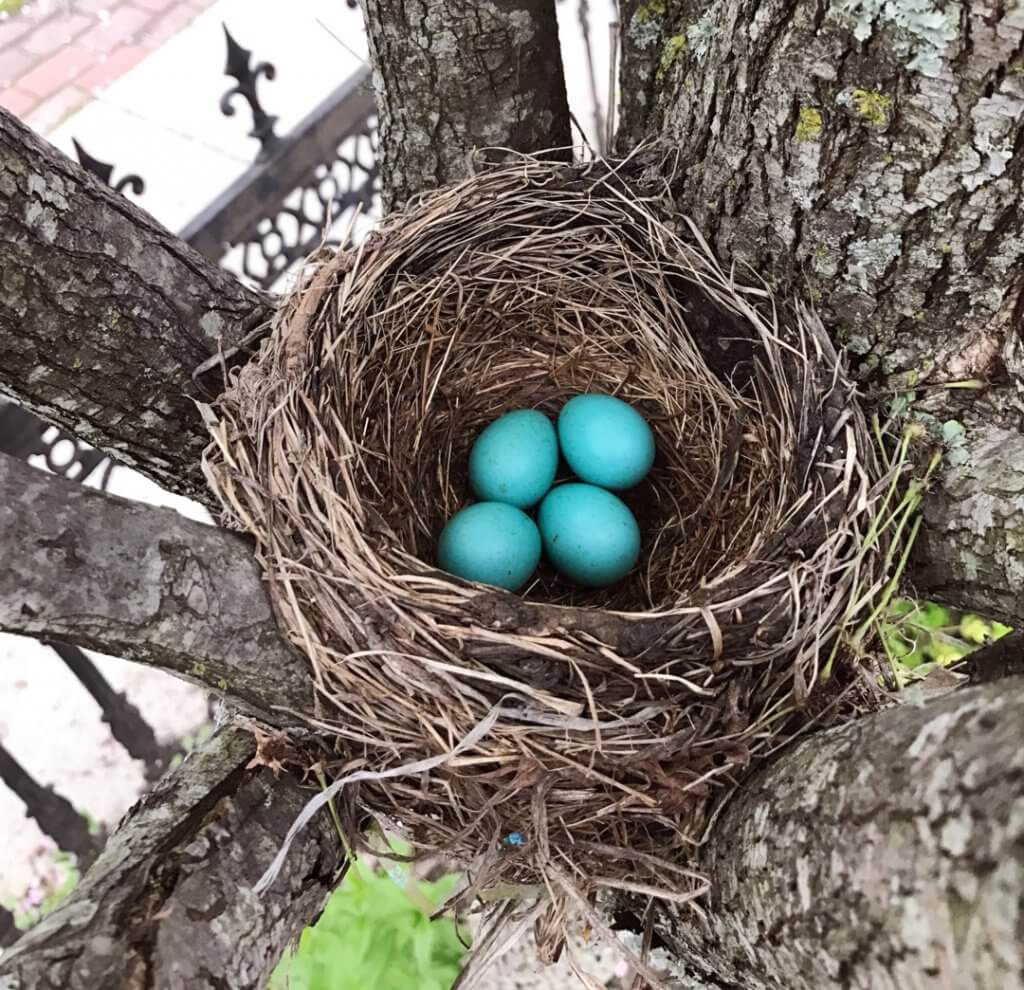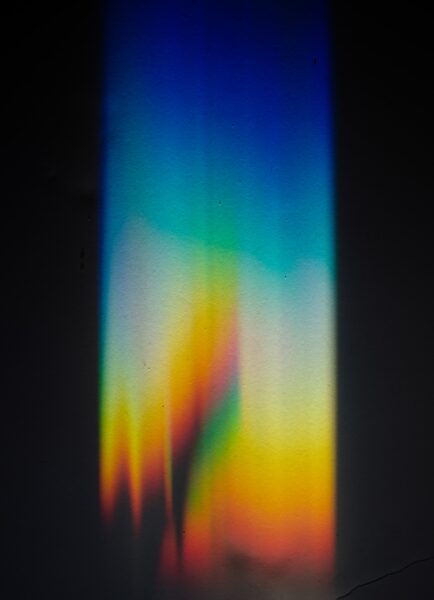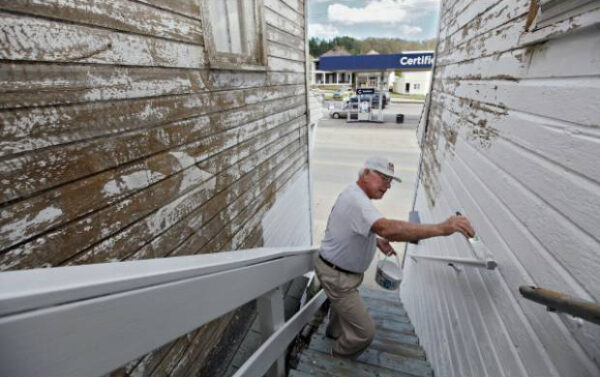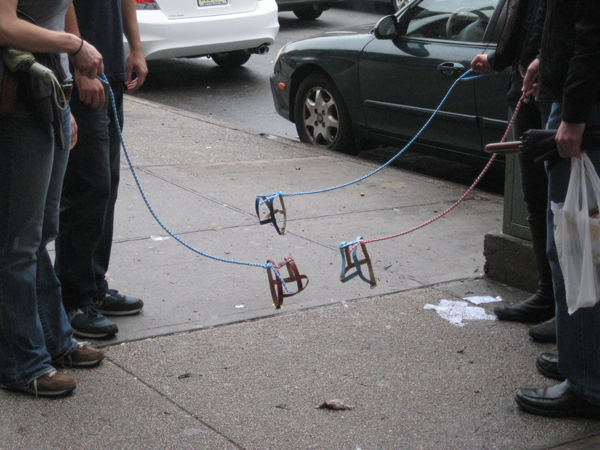
I started joyspotting before I really knew what I was doing. It was the early days of The Aesthetics of Joy (2009 to be exact) and I began to notice that I was becoming more attuned to the joy in my surroundings as I walked through the city. An elderly woman with a shock of magenta hair. Surprise. A cluster of balloons tied to a fire escape. Transcendence. Luminous bubbles floating across the subway tracks. Magic.
Whereas before I might not have looked twice at the orange traffic cones on the street, now I savored their pops of color against the gray sidewalk. Whereas before I might have ignored the man sitting next to me on the subway, now I noticed his polka dotted socks and smiled. The world seemed to be teeming with tiny, joyful surprises. All I had to do is look for them.
When I gave my TED talk, I put it this way:
It was like I had a pair of rose-colored glasses, and now that I knew what to look for, I was seeing it everywhere. It was like these little moments of joy were hidden in plain sight.
While it started out as something serendipitous, it became like a kind of mindfulness practice for me, a recognition that no matter where we are, we can tune our attention to something joyful and use that to buoy our spirits. Instead of seeing the world around us as a distraction, joyspotting reminds us that it can be a reservoir of positivity, one we can turn to at any time.
Why does joyspotting work? One reason might have to do with what positivity researchers call upward spirals. It turns out that emotions have feedback loops: when we feel a burst of joy, it makes us more attentive to joy in our surroundings and more likely to engage in behaviors that help us find more joy, such as interacting with other people or doing an activity we love.
You’ve probably experienced this before. Let’s say you notice a few bubbles drift by you’re walking through the park. You put down your phone, wondering what else you almost missed. You see a woman walking past wearing a colorful coat, and you compliment her. She smiles, and it makes you smile. The city feels a little bit friendlier, a little bit smaller. When an email comes in with a last-minute invitation to a dinner party, instead of thinking “Why wasn’t I invited sooner?” you think, “Why not?” Small moments of joy open our eyes to bigger opportunities, building on themselves.
The same thing can happen with negative emotions too. When we fixate on small slights or accidental happenings, it can lead to downward spirals which can put us in a real funk. But consciously seeking out moments of joy can help interrupt downward spirals and send us back on an upward trajectory.
The beauty of joyspotting is that it’s freely available. It costs nothing. It’s easy enough that anyone can do it, even children. (In fact, children are some of the best joyspotters — often we can learn something from them!) Joy is all around us. All we have to do is look for it.
If you’ve never tried joyspotting, no need to wait. Simply look around and keep an eye out for something that brings you joy. Try it today on your commute, while walking the dog, even just staring out the window from your desk at work. I’ve also heard from families who go joyspotting together on the way to school in the mornings.

There’s no right or wrong way to go joyspotting. That said, the more I did it, the more I realized that there are certain things I’d learned to that could increase my chances of actually finding joy. So we pulled these ideas together into a free guide to share with you! The Joyspotter’s Guide is a beautiful, downloadable resource that shares twelve of my favorite tips to help you notice more joy as you move through the rhythms of your daily life.
Download The Joyspotter’s Guide here.
Wondering how you might use this guide? Here are a few ideas:
- Keep a copy in your bag as a reminder to look for joy when you’re out and about.
- Choose one tip per day or week to focus your attention.
- Take it on a trip to heighten the joy of your vacation. If you’re traveling with family or friends, have each person choose one thing to be on the lookout for and share with the group.
- Designers and artists, use it to help find inspiration for a project.
- Teachers, I know some of you are joyspotting with your students. We designed this specifically so that it can double as a worksheet in the classroom or on a field trip.
The more I do it, the more I think joyspotting is a kind of superpower. Knowing that you can find something in the world around you that will lift your spirits — anytime, anywhere — lets you turn your environment into a tool for supporting your emotional wellbeing. It seems so simple, but for me, and I know for so many of you, it has been life-changing.
And once you’ve spotted joy, don’t keep it to yourself! Research shows that whether you share with one friend or a thousand on social media, the act of sharing something joyful intensifies the joy we find in an experience.
We’d love to see what joys you find. As of this writing, the #joyspotting hashtag on Instagram is hovering just under 13,000 posts. If you’re posting on social media, share with this hashtag to share your discoveries with the global community of joyspotters.
Happy joyspotting!





Discussion (2 Comments)
Hi Ingrid – I just finished your “Joyful” book and had to let you know how powerful I found it! I resonated with so much of what you said and remembered the days (when I was a younger adult) that I had playful items around my house – colorful, silly – then I “grew up” and decorated and found things to be functional (not necessarily joyful) and more “sophisticated”! I love my home and feel comfortable in it but now I realize what I’m missing in playfulness and color! I’m also writing because I cannot find the “resources” section on your website – I’d like to download the Joyful Toolkit printed at the end of your book. Any help would be appreciated as I’m fired up to go through the joy finding exercises! Thank you for all you do to make our world a better place!
Thanks so much, Judy! It’s now the “Learn” section. Enjoy!